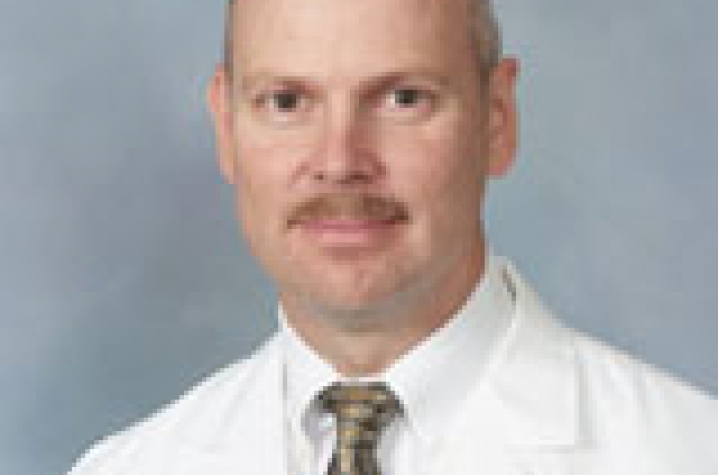Hands-only CPR: Know What to do in an Emergency
By Dr. Roger Humphries, chair of the of the Department of Emergency Medicine at UK College of Medicine.
LEXINGTON, Ky. (Feb. 24, 2014) -- Kentucky has a lot to boast about -- natural beauty and horses, for example. But sadly, some of our statistics are not brag-worthy. Heart disease is the #2 killer in Kentucky -- almost equal with cancer deaths -- and 9th in the nation. Almost 10,000 Kentuckians died of heart disease in 2010, some of which might have prevented by a new concept called "Hands-only CPR."
Hands-only CPR is a simplified method of traditional CPR. It requires no mouth-to-mouth breathing or special certification. Most importantly, Hands-only CPR is just as effective as traditional CPR in improving survival rates for "out of hospital cardiac arrest."
We know that a patient has a much better chance of surviving a heart attack if someone begins CPR immediately instead of waiting for emergency personnel to arrive. Since Hands-only CPR is simpler to perform, more people without medical training will be comfortable performing this technique. We know that in cities where the general public has a higher awareness of CPR by Bystanders, patients are up to eight times more likely to survive out of hospital cardiac arrest.
To administer Hands-only CPR:
- Call 911 and start CPR as soon as you see someone lose consciousness, collapse and stop breathing.
- Push hard and push fast with 2 hands in the center of the chest, letting the chest relax after each compression.
- Continue CPR without interruption until emergency personnel arrive.
If you can, take a CPR course to practice and feel prepared when someone needs you to act quickly. And if you work in a place with an AED (automatic external defibrillator), know exactly where it is located and how to use it. These devices are becoming more and more available in public places like government buildings, airports, gyms, casinos and schools, and can help restart the heart quickly, improving the chances of surviving a cardiac arrest.
If you or someone else is experiencing chest pain (especially if it is associated with shortness of breath or lightheadedness), call 911 immediately. DO NOT drive yourself or the patient to the Emergency Department -- paramedics have the expertise and equipment to provide the best care quickly. If the patient is conscious, have them CHEW and swallow one aspirin (even one baby aspirin will do). If the patient takes nitroglycerin, give them that as well.
Also be concerned if you have new chest pain or shortness of breath that goes away with rest as this is one of the warning signs that a heart attack may be imminent.
Know what to do in a cardiac emergency, including Hands-only CPR. What you do and how quickly you do it might save someone’s life.






